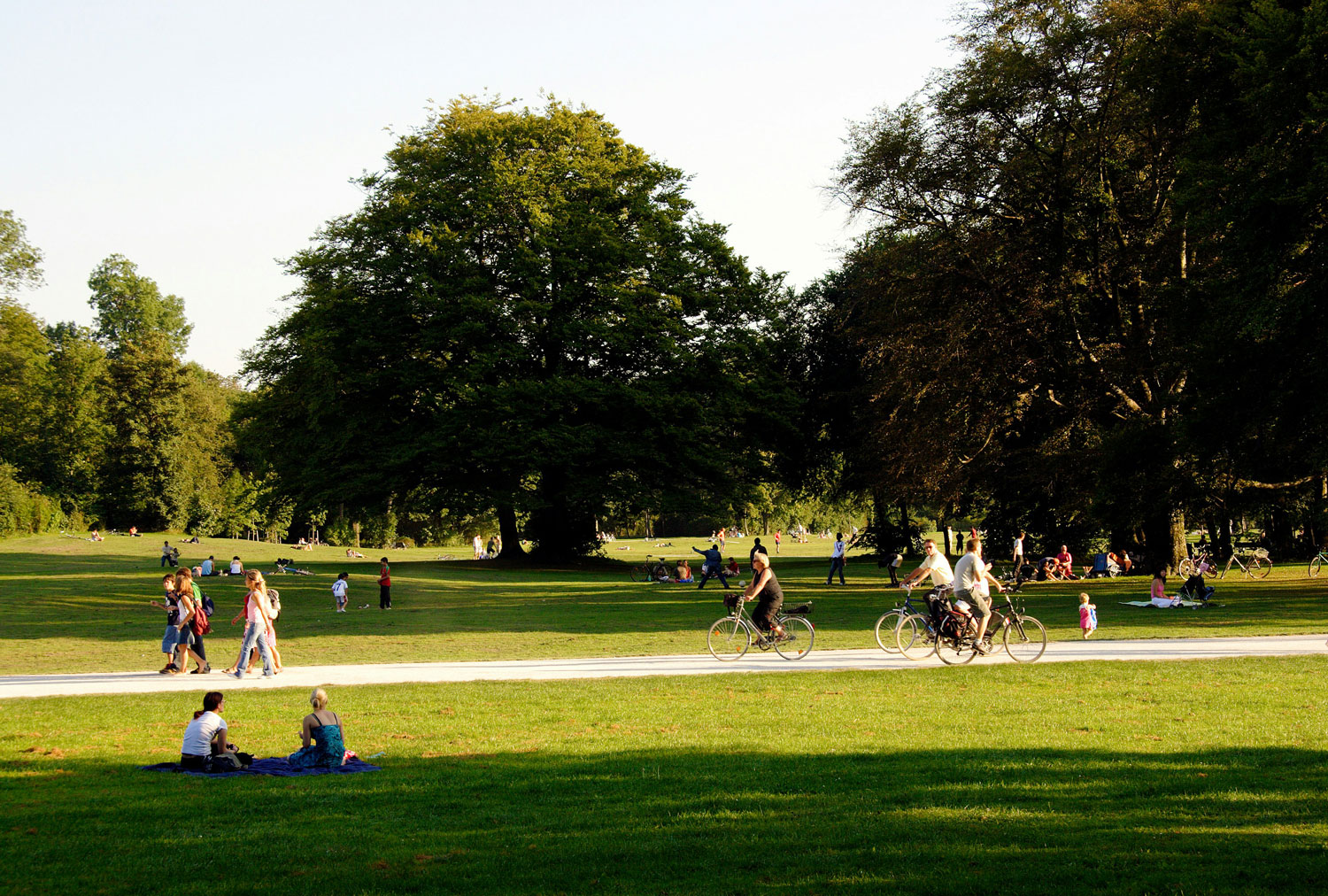In recent years, the concept of “third spaces” has gained significant attention in the fields of psychology, sociology, and urban studies. These are the spaces that exist outside of the traditional realms of “home”, the first space, and “work”, the second space [1]. Third spaces are places where people gather to socialize, relax, and engage in community activities, like cafes, libraries, parks, community centers, or even online spaces. In contrast to the first two spaces, third spaces are often seen as more informal, public-facing, unstructured, and less defined by obligations or productivity. Beyond being social spaces, third spaces can have profound effects on mental health and well-being [2].
This article will explore the ways third spaces influence mental health, focusing on their ability to foster social connection, reduce stress, promote creativity, combat loneliness, and offer a sense of belonging. Additionally, this blog will examine the impact of digital third spaces, particularly in the context of a rapidly digitizing world with a loss of in-person third spaces.
Understanding Third Spaces
The initial concept of third spaces was first introduced by sociologist Ray Oldenburg in his 1989 book The Great Good Place [3]. Oldenburg argued that for a community to truly thrive, it needs a balance of three types of spaces: home, work, and a third space where people can come together in an informal setting. Third spaces are typically characterized by being voluntary, accessible, and offering a safe environment conducive to socializing and advocacy. Some contemporary examples of third spaces include:
| Cafes, farmer’s markets, and restaurants | Food-centered locations where people meet casually |
|---|---|
| Public libraries, bookstores, book clubs | Spaces for quiet reading, learning, and informal discussion |
| Community or cultural centers | Locations for classes, events, faith-based activities, sports, or civic engagement
|
| Co-working spaces | Collaborative work environments that foster both productivity, professional networking, and social interaction. |
| Parks, trails, greenspaces | Outdoor, public spaces centered around used for exercise, recreation, social gatherings, etc. |
While many of these spaces are physical locations in a community, the rise of online platforms, such as social media networks, online gaming communities, and virtual forums, has led to the emergence of digital third spaces, which offer similar social experiences in a virtual context. Whether or not digital third spaces are a suitable enough alternative to physical ones is a point of contention [4].
Third Spaces and Mental Health
The link between the health of our social environments and our mental health is well-documented. Human beings are inherently social, and our psychological well-being thrives by way of strong social connections. In contrast, modern life, particularly in highly-commercial urban environments, can be overwhelming. The constant demands of work, family, and social expectations can create a sense of pressure that leads to mental and physical health issues such as burnout, chronic stress, and anxiety disorders [5]. The ability to separate aspects of enjoyment within third spaces distinct from work or home tasks can be a helpful way of compartmentalizing hobbies away from stressful settings.
Research suggests that exposure to natural environments, such as parks and green spaces, are particularly suited to reduce psychological stress. One review found that individuals who were exposed to natural scenes experienced a reduction in blood pressure, heart rate, and stress hormone levels [6]. In discussing the restorative benefits of nature found in current literature, the article emphasizes the importance of engaging with natural environments to reduce mental fatigue and stress.
Third spaces often act as “sacred” spaces for self-care, providing individuals with a low-stakes environment where they can engage in restorative activities [7]. Whether it’s taking a reflective walk in a park, sitting in a cafe reading a book, or enjoying a cup of coffee with friends, these spaces allow individuals to invest structured time into practicing relaxation. This is especially the case when it can be easy to crowd out time in order to invest more energy in traditionally productive activities. The spontaneous nature of third spaces—where people can interact casually and without expectation—fosters a sense of calm that can mitigate the mental and emotional toll of everyday life [1].
Loneliness and Third Spaces
One of the most significant contributors to mental health issues in the modern age is loneliness. According to the CDC, long-term social isolation and loneliness can lead to depression, anxiety, and even physical health issues like heart disease [8]. Third spaces are instrumental in combating these issues as a venue for social connection and resource exchange, especially for marginalized groups facing health disparities. For those who live alone or work in isolating conditions, third spaces offer the opportunity to engage with others and form professional connections as well. Over time, these interactions can lead to the creation of social support networks—a key protective factor against psychiatric conditions and determinant for mental and physical health resilience.
Whether it’s joining a book club at a local library, participating in a yoga class at a community center, or simply chatting with a stranger in a park, third spaces facilitate the kind of social engagement that prevents isolation and nurtures social bonds. The casual nature of third spaces can also ease the process of forming new social connections for those with social anxiety disorder [9].
The sense of belonging that individuals experience in third spaces, such as cafes or co-working spaces, can provide significant emotional support and enhance overall mental health. For example, someone who regularly visits a local café may come to recognize other regulars, creating an informal community [10]. Similarly, participating in group activities or events at community centers can foster a sense of belonging and structure due to weekly activities. These spaces allow people to engage in activities that align with their interests and values, reinforcing their sense of identity and connection to a larger social fabric. The familiarity and routine of visiting third spaces can create a sense of comfort and security. If someone is struggling with their work or home life, having a routine outlet can be instrumental in mental wellbeing.
Creativity and Mental Stimulation
Third spaces also offer environments conducive to creativity and mental stimulation, especially in older populations who may find it harder to find stimulating activities [8]. They provide an outlet for individuals to engage in hobbies, learn new things, or engage in creative expression. Whether it’s working on a personal project in a co-working space, attending a workshop at a library, or people-watching at a café, these environments stimulate the mind in ways that are often not possible in the confines of home or the rigidity of work. They are also a vehicle for civic engagement and community organizing that can drive local action around key issues, such as the funding and protection of third spaces, for example [11].
For individuals struggling with mental health issues such as depression or anxiety, engaging in creative activities can act as a therapeutic tool. Creativity has been shown to have therapeutic benefits, such as improving mood, reducing stress, and increasing feelings of self-worth. Some third spaces, particularly natural environments like parks, offer the opportunity for solitude and self-reflection [12]. In a fast-paced world, moments of stillness and reflection are increasingly rare, yet they are essential for mental health. Third spaces like gardens, quiet libraries, or tranquil lakesides provide the perfect backdrop for mindfulness practices such as meditation, journaling, yoga or simply taking a quiet moment to reflect. Studies have shown that mindfulness, the practices that encourage present-moment awareness and self-reflection, can significantly reduce symptoms of anxiety, depression, and stress [13]. These moments of introspection help individuals gain clarity, reduce mental clutter, and increase emotional regulation, all of which contribute to better mental health. For those experiencing mental health challenges, such as anxiety or depression, moments of stillness and reflection in third spaces can be particularly restorative.
Digital Third Spaces
In the age of technology, digital third spaces have emerged as a new frontier for social connection and mental health. Online forums, social media platforms, gaming communities, and virtual reality environments provide digital spaces where people can interact with others and engage in communal activities.
While digital third spaces offer many of the same benefits as physical spaces—such as social connection, support, and shared experiences—they also present unique challenges [14]. The anonymity of online interactions can sometimes foster toxic behaviors such as cyberbullying or the spread of misinformation. Additionally, excessive time spent in virtual spaces can contribute to social isolation if it replaces face-to-face interactions or creates an unhealthy reliance on online relationships.
However, when used mindfully, digital third spaces can offer a supportive and inclusive environment for people who may otherwise feel marginalized or isolated or simply not ready to engage in in-person opportunities. Online support groups, virtual meetups, and digital interest communities can provide a sense of belonging and connection, especially for individuals with disabilities, those living in remote areas, or those facing stigma in their physical communities.
Essentially, third spaces, whether physical or digital, play an invaluable role in enhancing mental health. By providing environments for social interaction, relaxation, creativity, and self-reflection, they offer a much-needed respite from the pressures of work and home life. The mental health benefits of these spaces are profound, ranging from stress reduction and increased social connection to fostering a sense of belonging and promoting mindfulness. Increasingly there is a need for these spaces to be better funded and expanded into different settings, such as educational campuses and healthcare facilities. Having third spaces for students and patients to engage beyond their academic or medical needs is crucial in maintaining a multifaceted sense of community.
As policy changes the role of third spaces in society, it is crucial to consider their role in promoting mental well-being. As we continue to face the challenges of modern life, nurturing and creating more third spaces, both physical and digital, can be a key component in fostering healthier, more resilient communities.
Read more from our sources below:
-
https://esl.uchicago.edu/2023/11/01/third-places-what-are-they-and-why-are-they-important-to-american-culture/#:~:text=Some%20of%20these%20spots%20can,and%20connect%20with%20their%20community.
-
https://www.northeastpsychological.com/third-places/
-
https://www.pps.org/article/roldenburg
-
https://www.pewresearch.org/internet/2001/10/31/part-2-the-internet-communities-and-the-virtual-third-place/
-
https://www.cdc.gov/niosh/docs/99-101/default.html#:~:text=Although%20the%20importance%20of%20individual,as%20a%20primary%20prevention%20strategy.
-
https://pmc.ncbi.nlm.nih.gov/articles/PMC6926748/#:~:text=In%201984%2C%20Ulrich%20reported%20that%20surgical%20patients,the%20brick%20wall%20of%20a%20building%20%5B9%5D.
-
https://titleix.web.baylor.edu/sites/g/files/ecbvkj1566/files/2023-05/Baylor%20Intro%20to%20RJ%20PP%20July%202019%20%281%29.pdf
-
https://www.nia.nih.gov/news/social-isolation-loneliness-older-people-pose-health-risks
-
https://www.sciencedirect.com/science/article/pii/S0896627323006992
-
https://www.aei.org/op-eds/what-are-the-real-third-places/
-
https://www.shankerinstitute.org/blog/what-are-third-places-and-why-do-they-matter#:~:text=Third%20places%20act%20as%20a%20core%20setting,can%20be%20thought%20of%20as%20societal%20glue.
-
https://pmc.ncbi.nlm.nih.gov/articles/PMC8305859/
-
https://pmc.ncbi.nlm.nih.gov/articles/PMC5679245/
-
https://pmc.ncbi.nlm.nih.gov/articles/PMC9968624/#:~:text=Results,greater%20’commercial’%20visit%20reduction.
| Cafes, farmer’s markets, and restaurants | Food-centered locations where people meet casually |
|---|---|
| Public libraries, bookstores, book clubs | Spaces for quiet reading, learning, and informal discussion |
| Community or cultural centers | Locations for classes, events, faith-based activities, sports, or civic engagement
|
| Co-working spaces | Collaborative work environments that foster both productivity, professional networking, and social interaction. |
| Parks, trails, greenspaces | Outdoor, public spaces centered around used for exercise, recreation, social gatherings, etc. |







